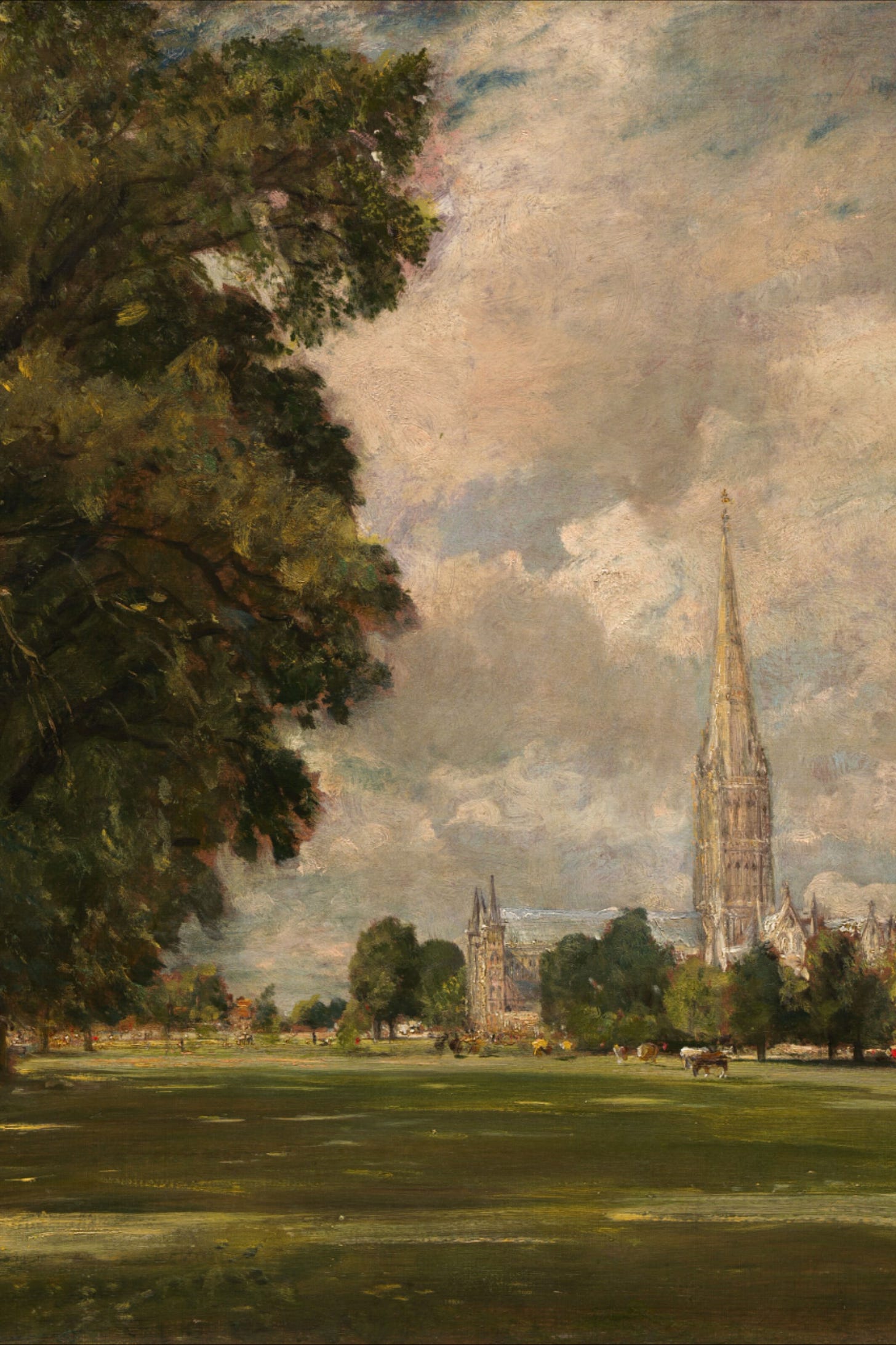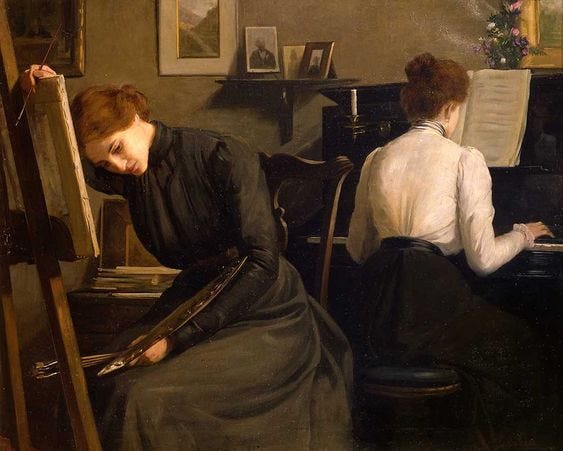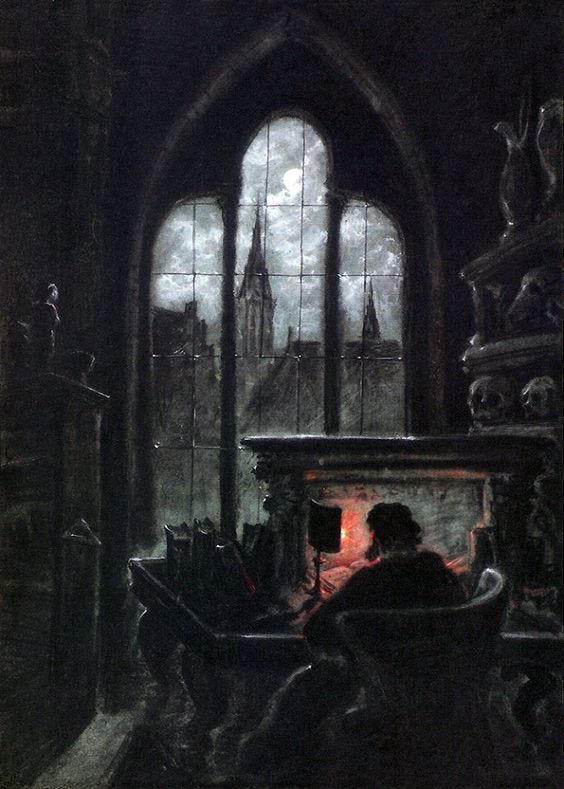It was this ‘eternal language’, present in the ‘extreme silentness’ of contemplation; in the ‘Sea, and hill, and wood,’; and ‘all seasons [of] the general earth’, that the Romantics sought to imitate and absorb. (Frost at Midnight, Stanza’s I, III, IV).
Romanticism, and Divinity Within Nature:
The literary voices of the English Romantic movement, writing in the late eighteenth and early nineteenth century, attempted to restore the dignity of nature as a force inviolable in itself. The Romantic movement was a reaction against industrialisation, and the increasing reliance on mechanical means to support society, indeed a reaction ‘against the rationalistic, prosaic, sceptical […] spirit of the age’ of the Enlightenment (Moore, 249). If we seek to know the beginnings of the English Romantic movement, it is important to mention the jointly published work, Lyrical Ballads (1798), by William Wordsworth and Samuel Taylor Coleridge. This text, including Coleridge’s The Rime of the Ancient Mariner, and Wordsworth’s Tintern Abbey, is acknowledged by scholars to have kickstarted Romanticism in England. In the famous preface, Wordsworth advocated for a ‘nature-spirit symbiosis, coupled with a pronounced inward turn’
(Dallmayr, 62). Crucially, Wordsworth consciously repudiated the upper-class fascination with elitist language and setting, choosing instead to use examples from ‘common life’, select[ing] [a] language used by men’ (Quoted by Dallmayr, 62, 63). The usage of common language allowed these first-generation Romantics to incorporate the ‘passions of men […] with the beautiful and permanent forms of nature’ (Dallmayr, 63). In Wordsworth’s sonnet, The World is Too Much With Us (1807), he laments the dire situation of the everyman, stuck as he is with ‘getting and spending’ in London’s industrial, urban landscape. The average man ‘lay waste’ his inward powers, finding ‘little […] in Nature’ that was his own. Towards the volta of the poem, Wordsworth finds hope in a return to pre-Christian foundations, exclaiming that he would ‘rather be a pagan’, so he might ‘have glimpses’ of Proteus or Triton, Greek gods of the sea, and as a result become ‘less forlorn’ with his uninspiring surroundings (Wordsworth, 94).
Forlorn. This word, meaning pitifully sad or lonely, came to typify for the Romantics a state of being deprived of life-giving natural surroundings. Second-generation Romantic poet, John Keats, in his Ode to a Nightingale (1819), would describe the ‘the very word’ forlorn ‘[as] like a bell’ to ‘toll’ him away from the poetic powers of the natural world—‘such an ecstasy!’—back to the lonely state of ‘my sole self’ (Keats, 754). The word may have communicated something of a communal sigh amongst the Romantics, discontented as they were with the bleak city structures of civilised England. English poet, William Blake, in his collection Songs of Innocence (1789), would describe a lost and confused child, ‘Trouble wildered and forlorn’, (Blake 13) presumably unable to find her way amidst a rapidly changing, increasingly mechanised landscape. In his later collection, Songs of Experience (1794), Blake would describe a paralysed London, where ‘each charter’d street’ would reveal ‘Marks of weakness […] woe’, ‘curse[s]’ and a ‘cry of fear’ (Blake, 27). A proper integration of the natural world (not merely a far-off, reasoned appreciation) was essential to a flourishing society. We find in Romanticism a ‘sympathy for all nature and a belief in its moral and spiritual associations with human life’ (Moore, 251). Without this close integration, Blake’s bleak and smoggy London would prevail.
For the Romantics, nature was not merely an external force liable to be tinkered with in order to produce aesthetic results. There is something more mystical, even unorthodox, about their writings. Although the first-generation Romantics, such as Wordsworth and Coleridge, were members of the Church of England, there is a certain tension and uneasiness with Christianity in their writings. Oftentimes, their views of the natural world felt more at home with Pantheism than with than with the Church. In Coleridge, for instance, there appear to be the vestiges of ‘two selves’—a Christian and a pagan (Hughes, 6). For the Romantics, there was understood to be a ‘divine spirit permeating […] all creation’, expressing itself in ‘the doctrine of the Deity immanent in nature […] tak[ing] the form of a vague pantheism virtually identifying Creator and created’ (Moore, 248). This tension was present in a particular way in Coleridge’s Kubla Khan (1816) and The Rime of the Ancient Mariner (1798). These works reveal ‘[a]n activated familiarity with Norse myth’, with Coleridge having been keenly interested in ‘the gods of Asgard’, and the various mythic ‘excursion[s] of Thor’, with the ‘world plan of Norse myth [being] matched to [the] sketch of Kubla’s world egg’ (Hughes, 26, 27). Consider these lines from his famous poem, Frost at Midnight (1792), which first appeared in Lyrical Ballads:
The lovely shapes and sounds intelligible Of that eternal language, which thy God Utters, who from eternity doth teach Himself in all, and all things in himself. Great universal Teacher! he shall mould Thy spirit, and by giving make it ask.
It was this ‘eternal language’, present in the ‘extreme silentness’ of contemplation; in the ‘Sea, and hill, and wood,’; and ‘all seasons [of] the general earth’, that the Romantics sought to imitate and absorb. Wordsworth’s Tintern Abbey (1792) also speaks of this strange and powerful presence:
And I have felt A presence that disturbs me with the joy Of elevated thoughts; a sense sublime Of something far more deeply interfused, Whose dwelling is the light of setting suns, And the round ocean and the living air, And in the blue sky, and in the mind of man: A motion and a spirit, that impels All thinking things, all objects of all thought, And rolls through all things.
Indeed, when Wordsworth and Coleridge came together to write the Lyrical Ballads—and in doing so, forever change literary history— ‘they were both Pantheists of a kind’, with a belief in an ‘all-inclusive Universal Spirit, that both poets called God’. (Hughes, 38).
Works cited:
Dallmayr, Fred. Return to Nature? An Ecological Counterhistory (Kentucky: University Press of Kentucky, 2011).
Hughes, Ted. A Choice of Coleridge’s Verse: Edited and Introduced by Ted Hughes (London: Faber and Faber Limited, 1996).
Padgett, JoAnn. Allman, Melinda. Mansfield, Dan. The Romantic Poets (San Diego: Canterbury Classics, 2015).
Marshall, David. The Problem of the Picturesque. Eighteenth-Century Studies, Vol. 35, No. 3 (Spring, 2002).
Moore, C. A., The Return to Nature in English Poetry of the Eighteenth Century. Studies in Philology, Vol. 14, No. 3 (July., 1917).
Townsend, Dabney. The Picturesque. The Journal of Aesthetics and Art Criticism, Vol. 55, No. 4 (Autumn, 1997),







